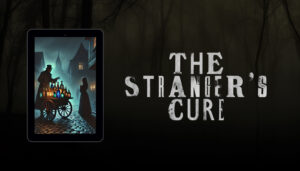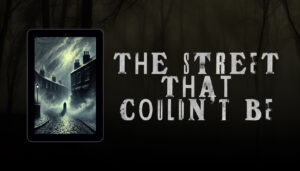In this week’s blog, I’m going to be sharing some behind-the-scenes insights into how my writing process works, focusing primarily on my fiction.
Planning and idea generation
For me, this is the easiest part of the entire process. That shouldn’t come as a shock, really; I’ll be honest. I have this weird thing where I either start with a character or a setting. As soon as I’ve got them in place, the ideas come.
For example, I’ve been making notes, occasionally, for an urban fantasy series I want to write, set in a supernatural academy in acres and acres of ancient forests.
This idea came from seeing a picture of a small outbuilding. I started writing, and now I’ve got the main storyline sorted, ready for when the project gets added into the production schedule.
Those ideas aren’t always fully formed, though, and they are not coherent. But they come, and by all’s unholy, I let those bad boys run free. No matter how weird, stupid, or downright unrealistic those ideas are, I let them thrive.
I have been known to stop a conversation mid-flow, much to the annoyance of my other half, and start tapping away on my phone. They’re used to it now, so it’s fine.
Anyway, once I’ve started, I have a specific playlist that I listen to when I’m mind mapping where the book needs to go, and what fresh hell I’m going to put my characters through.
My brain understands that when the music comes on, it’s time to create.
The songs are mostly soundtracks from films, mainly Harry Potter, Lord of the Rings, Guardians of the Galaxy, and a few more.
My ideation stage is filled with scraps of paper, random scribbles, arrows, and a huge amount of crossing out.
First drafting
Now, this process has changed over the years. I might do another blog on that in the future, but as of writing, my first draft is very much a word-vomit stage. I sit down with the first line and just go.
To allude to the above, I never used to be like this. I used to think that plotting was the way forward and couldn’t even comprehend how someone could discovery write a first draft. That, in my experience, was a mistake.
I’ve had various conversations with authors in the writing sprints I take part in, and they’ve asked why I switched from plotting to discovery writing.
Simple really.
I spent so long planning and outlining I lost all joy for the story. I’d already told it, in a shortened form, so what was the point in fleshing it out?
So now, I stick on the aforementioned playlist, turn the volume up, and just let my fingers do the work. I can write fast, and when I get in the zone, I have no idea what’s happening around me.
I see the story like a film, and I’m just typing what’s happening in my mind’s eye.
It’s messy, but I accept that. I don’t let the inner editor take control. If I did that, I’d never finish a draft. Once I’m done, I leave the first draft for at least three weeks, sometimes more, and then it’s onto the next stage.
Editing
Now, this is the stage I have a real love-hate relationship with.
Over the years, much like the first drafting stage, my approach has changed significantly, and I hope for the better.
On a random tangent, isn’t that the joy of creation? You learn, you grow, you prune and you trim, but ultimately, you’ve created something you’re proud of?
Anyway, not important. So, editing.
My editing process, at the time of writing, comes in multiple stages, which I’ve laid out below:
- Reading through like a reader, on a Kindle, and make overarching story notes, which deal with plot holes, inconsistencies, and general feeling.
- Implement the above into version 2.
- Run version two through Text-to-Speech on Microsoft Word. The reason for this is two-fold. One, it’s how I pick up on mistakes, repeated words, and convoluted sentences. Two, once I have the funds for audio books, I believe it’ll make the narrator’s job a lot easier.
- Save that as version 3.
- Focus on enhancing setting, descriptions, and including the senses. Keep that as version 3.
- Rework character voice and add emotional depth to the scenes. I edit voice and make sure it’s consistent throughout. For example, I have a character who only refers to herself in the third person. I also have queer romantic subplots in The Adventures of Eddie Skillen series.
- Save that as version 4.
- Get version 4 and run it through ProWritingAid. For those who don’t know, this is a software which uses AI to help pick up various things to change. For example, passive voice, sentence length, genre expectations, grammar, and style.
- Save that as version 5.
Once that’s done, I reformat the entire manuscript, with a holding cover, and send that to my Kindle for another read through.
The hate part of this process is because it takes so bloody long. However, the love part is that I can see the growth of both my writing, and the characters, with each version.
In summary
There you go, a high-level overview of my writing process. I hope it’s given you a proper look into the way I work on my fiction, and helps you understand that it’s not just as easy as sitting down and writing.
No matter how lovely that would be, the words can be a hard, hard slog. But in the end, it’s all worth it.
It’s how I released my free reader magnet, The Mother of Prophecy, into the wild.
Over to you, have you got questions about what you’ve read?
If you’re an author or someone who writes for a living, what’s your process like? Is there anything you think would help streamline my process?
Or perhaps there’s a specific ritual you have to go through to get the creative juices flowing.
I’d love to hear from you, so make sure you let me know in the comments below, or reach out to me via my free author newsletter.
Look forward to hearing from you soon!
Robyn



